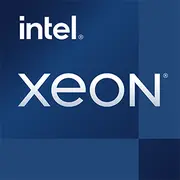Intel Xeon E3-1505M v6

Intel Xeon E3-1505M v6: A Processor for Professionals in the Era of Hybrid Work
An analysis of capabilities, use cases, and relevance in 2025
Architecture and Technology Process: The Foundation of Reliability
Codename and Technology
The Intel Xeon E3-1505M v6 processor, released in 2017 on the Kaby Lake architecture (14 nm), remains a niche solution for mobile workstations. Despite its age, its key features are still relevant for tasks requiring stability and specialized functions.
Cores, Threads, and Frequencies
- 4 cores / 8 threads thanks to Hyper-Threading.
- Base frequency: 3.0 GHz, maximum in turbo mode — 4.0 GHz (for a single core).
- Integrated graphics: Intel HD Graphics P630 with a base frequency of 350 MHz and dynamic boost up to 1.1 GHz.
Architectural Features
- Support for ECC memory — critical for workstations where data errors are unacceptable (e.g., rendering or scientific computing).
- vPro and Trusted Execution technologies for corporate security.
- 8 MB of L3 cache, which enhances performance in multi-threaded scenarios.
Power Consumption and TDP: A Balance Between Power and Battery Life
The processor's TDP is 45 W, which is typical for high-performance mobile CPUs. However, in 2025, this value seems high compared to modern AMD Ryzen 7000/8000 (5–6 nm) or Apple M3 (3 nm) chips with TDPs of 15–28 W.
What Does This Mean for Users?
- Notebooks with this processor require an efficient cooling system (two fans, copper heat pipes).
- In compact enclosures (e.g., ultrabooks), throttling may occur under prolonged load.
Performance: Benchmarks and Real-World Tasks
Geekbench 6 scores:
- Single-Core: 1244 — comparable to Intel Core i7-7700HQ.
- Multi-Core: 3856 — comparable to Ryzen 5 5500U (6 cores, 15 W).
Office Work and Multimedia
- Running 20+ tabs in Chrome + Office 365 + background video rendering in Premiere Pro — the processor handles it, but under prolonged load, temperatures reach 85–90°C.
- 4K video in VLC or YouTube — iGPU load at 70–80%, smooth playback.
Gaming
- CS2: 720p, low settings — 60–70 FPS.
- Cyberpunk 2077: 720p, minimum settings — 25–30 FPS (without DLSS/FSR).
Conclusion: The processor is somewhat weak for gaming but suitable for less demanding projects or streaming through cloud services.
Turbo Boost Mode
Under short bursts of load (e.g., opening a heavy project in AutoCAD), the frequency rises to 4.0 GHz, but after 20–30 seconds, it drops to 3.5 GHz due to overheating.
Use Cases: Who is the Xeon E3-1505M v6 Suitable For?
1. Engineers and Designers:
- SolidWorks, AutoCAD — ECC memory support minimizes risk of failures.
- Rendering in Keyshot — 4 cores are sufficient for small projects.
2. IT Professionals:
- Local servers, virtualization (VMware, VirtualBox) — vPro technologies simplify remote management.
3. Photographers and Videographers:
- Lightroom, DaVinci Resolve — the processor handles 1080p editing, but for 4K, a discrete GPU (e.g., NVIDIA Quadro) is required.
Who Should Avoid It?
- Gamers: It’s better to opt for a laptop with a Ryzen 7 7840HS and RTX 4060.
- Users who value battery life: Modern Ultrabooks with Apple M3 or Intel Core Ultra 7 last 1.5–2 times longer.
Battery Life: How Long Will the Laptop Last?
Under typical load (browser, office applications):
- A laptop with a 56 Wh battery — 4–5 hours.
- For comparison: Dell XPS 13 (2025) with Core Ultra 7 155U — up to 12 hours.
Energy-Saving Technologies
- Intel SpeedStep — dynamic frequency management.
- C-States — disabling unused cores.
However, the 14-nm architecture lags behind modern chips in efficiency.
Comparison with Competitors
AMD Ryzen Pro 5755G (2023)
- 6 cores / 12 threads, 7 nm, TDP 35 W.
- Geekbench 6 Multi-Core: ~5200.
- Pros: Better performance-to-power ratio.
Apple M2 (2024)
- 8 cores (4+4), 5 nm, TDP 20 W.
- Geekbench 6 Multi-Core: ~8900.
- Pros: Record battery life, integration with macOS.
Intel Core Ultra 7 165H (2025)
- 16 cores (6+8+2), Intel 4 nm, TDP 28 W.
- Geekbench 6 Multi-Core: ~12500.
- Pros: AI accelerator for neural network tasks.
Conclusion: The Xeon E3-1505M v6 lags behind in performance and efficiency but excels in niche functions (ECC, vPro).
Pros and Cons
Strengths:
- Support for ECC memory — reliability for professional tasks.
- High stability under prolonged loads.
- Compatibility with Windows 10/11 and Linux.
Weaknesses:
- Outdated 14-nm technology process.
- High power consumption.
- Limited single-core performance (30% lower than Core Ultra 7).
Recommendations for Laptop Selection
Types of Devices:
- Mobile Workstations: Dell Precision 5520, HP ZBook 15 G4.
- Premium Business Laptops: Lenovo ThinkPad P51.
What to Look For:
1. Cooling: At least two fans.
2. RAM: 32 GB DDR4 with ECC.
3. Display: IPS matrix with 100% sRGB coverage for design.
4. Ports: Thunderbolt 3 for connecting external GPUs.
Prices in 2025:
- New laptops with Xeon E3-1505M v6 are rare, but leftovers can be found for $1200–$1500 (e.g., Dell Precision 5520 with Quadro M1200).
Final Conclusion: Who is the Processor Suitable For?
The Intel Xeon E3-1505M v6 in 2025 is a choice for a narrow circle of professionals who value:
- Reliability: ECC memory and corporate features.
- Compatibility: Working with specialized software that requires certified components.
- Budget: Purchasing a used laptop for $600–$800 as a temporary solution.
Alternatives:
- For most users, it’s more advantageous to get a laptop with Ryzen 7 Pro 7840U or Intel Core Ultra 7 — higher speed, lower power consumption.
If you're an engineer working with mission-critical data or an IT administrator who values security, the Xeon E3-1505M v6 might still be justifiable. In other cases, it represents a step into the past.
Basic
CPU Specifications
Memory Specifications
GPU Specifications
Miscellaneous
Benchmarks
Compared to Other CPU
Share in social media
Or Link To Us
<a href="https://cputronic.com/cpu/intel-xeon-e3-1505m-v6" target="_blank">Intel Xeon E3-1505M v6</a>